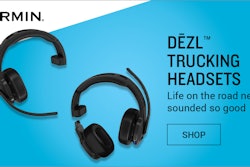The increased revenue that can come from changing carriers is easy to understand, but the cost involved in making a switch often is overlooked. It can be thousands of dollars when you consider all the downtime involved in searching for the new lease, going through orientation and other interruptions of your routine.
When you look closer at revenue and costs instead of just pay per mile, net income might not be any better at a different carrier. First, search for carriers that pull the kind of freight and run in the geographic area that interests you. List as many potential carriers as possible.
Pick a name on the list, and look for a reason not to choose it. For instance, maybe the company requires more experience than you have or requires a newer tractor.
When you find a carrier you can’t eliminate, put it on your short list. When you reach five, follow these steps:
Contact the carriers directly. Request a copy of their lease agreement. Read each lease fully, and make notes. List things you like and don’t like and things you don’t understand. If a fleet can’t or won’t send an agreement, scratch it off the list.
Call each carrier about its lease. You need to make sure you understand everything and how cooperative the carrier is. If you can’t get straight answers about the lease now, odds are you’ll hit the same obstacles later.
Schedule a visit to each company. If there are multiple locations, visit headquarters. It might be expensive and time-consuming, but you are trying to eliminate needless risks as you design your business.
Interview key people. Request a visit with someone in each department you would deal with as a leased owner-operator. Prior to your visit, write down questions for each department -- dispatch, safety and compliance, operations and settlement. If they don’t have time to discuss such matters now, do you think they will have time for you after you sign the lease?
[Related: Trucking Law: Your rights under the leasing regulations]
Questions to ask of prospective carriers
Compensation. Ask if fuel surcharges are available and if they are packaged with base pay or paid separately. Check whether the fuel surcharge is nationwide or regional and what miles-per-gallon rate the surcharge is based on -- 6 or 7 mpg is common. Confirm that 100% of the surcharge is passed along to owner-operators.
Ask if the carrier offers layover pay, empty-mile compensation and pay for loading and unloading, or reimbursement for lumper charges. Do they reimburse for tolls? Do they pay your fuel taxes, or are they charged back to you? When are settlements paid?
Does the carrier impose chargebacks? Ask about paying for liability insurance or onboard fleet management systems such as electronic logging devices or tracking systems.
Hourly pay for detention, the time spent waiting at shipper and receiver locations, continues to be increasingly prevalent. Does the carrier offer detention pay? Is it guaranteed regardless of whether it’s collected from the shipper/receiver?
Old practices survive at some carriers, yet many businesses have moved in the direction of time-based pay systems with hourly detention-pay plans, often billed after one or two free hours.
 The Overdrive/ATBS Partners in Business owner-operator business education program is sponsored by Rush Truck Centers, the premier solutions provider to the commercial vehicle industry with 150-plus full-service dealership locations in the United States and Canada. The PIB book is available for download via this link.
The Overdrive/ATBS Partners in Business owner-operator business education program is sponsored by Rush Truck Centers, the premier solutions provider to the commercial vehicle industry with 150-plus full-service dealership locations in the United States and Canada. The PIB book is available for download via this link.
Home time. In assessing routes, loads and miles, ask if certain routes or regions are open that would accommodate your desired amount of home time. Make similar inquiries about specialized work such as heavy-haul or high-touch loads. Ask carriers about available miles and routes, and question their operators about the miles they’re getting.
Culture. Some carriers will want to control everything you do, and others will give you plenty of rein. Some companies provide limited benefits to owner-operators, such as fuel networks and insurance assistance. Don’t overlook possibilities at small carriers, particularly if you’re looking for more operational freedom.
Philosophy. Does the carrier’s way of doing business match yours? Ask whether company drivers get dispatched before owner-operators, or whether company drivers get better loads. Even owner-operators who work for the same company can get significantly different pay; the difference can be as much as 30 cents per mile. Would you be in the carrier’s top tier -- or bottom tier?
You usually can survive one switch in a year, though it’s difficult. Switching twice in a year could put you out of business. If you have a good relationship with your driver manager, enjoy the company’s culture and have opportunities to get the miles and pay that you need, then chances are you won’t be better off anywhere else.
[Related: Keen fixed, variable cost understanding key to owner-operator success]





